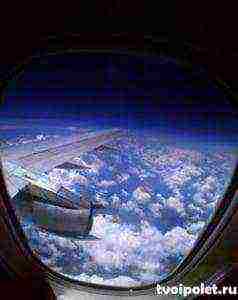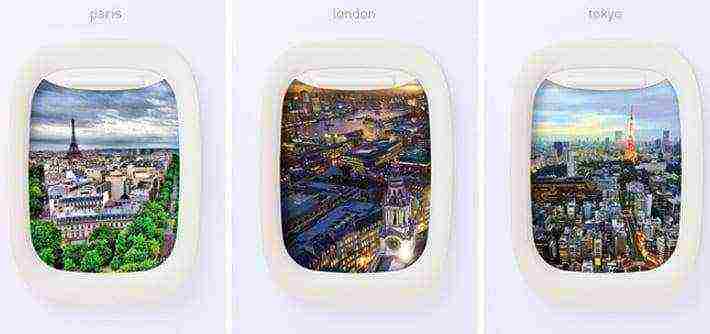Content [show]
The stages of take-off and landing in air transportation account for the largest number of emergencies. During landing or takeoff, flight attendants need to be especially careful to observe what is happening overboard in order to promptly report a possible emergency situation to the pilots. Security in these moments is always given close attention. So, the window shades open because:
- … The passenger's eyes must become accustomed to natural light - then he will see better in the event of an emergency. For the same reason, during takeoff or landing, the main lighting in the cabin is also turned off.
- ... flight attendants or even passengers can see what is happening overboard. This will allow you to promptly inform the crew about the occurrence of an emergency situation or assess the position overboard during the evacuation. For example, to see if there is a fire or not. In addition, in the event of an emergency landing, rescuers will be able to see what is happening in the cabin through the windows.
- … It's easier for passengers not to get hurt. Indeed, with a very hard landing, the plastic curtain can split and damage your face with fragments.
- ... it helps to orientate in space. When the window is open, a person sees how the plane lands and in what position it is relative to the surface of the earth. If the window were closed, the passenger could easily imagine that the plane is making a loop in the air or simply falling.
Can the windows themselves crash during a hard landing?
The porthole is, as a rule, a two- or three-layer glass unit. In this case, two glasses at the same time are power glasses, that is, capable of withstanding pressure drops. The windows are designed in such a way that they are able to withstand the pressure between the passenger compartment and the external atmosphere, comparable to a load of up to 4 tons. The inner glass of the porthole, which is visible to passengers inside the cabin, is decorative. Its damage will not affect the safety of your stay on the plane.
Why are portholes streamlined?
This is not a design idea, but a security measure. Rounded windows, as the history of aviation has shown, better hold and distribute pressure throughout the structure. The history of jet aircraft is especially striking proof of this. On jet airplanes, increased demands are made on portholes due to speed: there are many small windows and fewer large ones, so the design becomes more reliable.
In the 1950s, passenger jet aircraft construction was just beginning. The Comet of the British aircraft manufacturer De Havilland was the first airliner to perform passenger transportation, and was a state-of-the-art passenger aircraft that had a pressurized cabin. However, the first two "Comets" were in for a sad fate - in 1954 they collapsed right during the flight. 56 people died. The square windows were later named to blame!
Interestingly, however, the famous Soviet supersonic passenger aircraft TU-144, developed by the Tupolev Design Bureau in the 1960s, had tiny quadrangular windows. The design features of the windows were explained by A. Tupolev as follows: "The dimensions and shape of the windows are a way to reduce the external pressure in the supersonic regime."
What is an airplane window
 The airplane porthole is a 2 / x-3 / x layer glass unit. At the same time, both glasses are power glasses, that is, capable of withstanding pressure drops. The windows are designed in such a way that they are able to withstand the pressure between the passenger compartment and the external atmosphere, comparable to a load of up to 4 tons. The inner glass of the porthole, which is visible to passengers inside the cabin, is decorative. Its damage will not affect the safety of being on the plane. And the window shade is a fragile thing. It can break into small, sharp particles and injure you.
The airplane porthole is a 2 / x-3 / x layer glass unit. At the same time, both glasses are power glasses, that is, capable of withstanding pressure drops. The windows are designed in such a way that they are able to withstand the pressure between the passenger compartment and the external atmosphere, comparable to a load of up to 4 tons. The inner glass of the porthole, which is visible to passengers inside the cabin, is decorative. Its damage will not affect the safety of being on the plane. And the window shade is a fragile thing. It can break into small, sharp particles and injure you.
According to flight safety rules, during taxiing, takeoff and landing of the aircraft, the window shades must be open. The fact is that it is at these stages of air transportation that the largest number of emergencies occurs. Therefore, the utmost attention is paid to safety.
Why it is necessary to open windows when taking off / landing an aircraft
First, your eyes need to get used to the natural light so you can see better in an urgent emergency. You have probably noticed that the main lighting in the cabin is also turned off during takeoff / landing.
Secondly, flight attendants or even passengers can see what is happening overboard. This will make it possible to promptly inform the crew about the occurrence of an emergency situation or assess the position overboard during the evacuation. For example, to see if there is a fire or not. In addition, in the event of an emergency landing, rescuers will be able to see what is happening in the cabin through the windows.
Thirdly, as mentioned earlier, in the event of an emergency, the window shade can break and cause bodily harm.

Thus, you and I have figured out that the window blinds during takeoff and landing of the aircraft must be open to provide air passengers with greater safety. Well, you can also enjoy the beautiful views when landing or taking off the plane.
And for dessert for you today, a small Christmas show from Air Baltic :).
The data used on the Tutu.ru website, including the cost of electronic air and railway tickets, electronic tickets for buses and tourist products, as well as the schedule of airplanes, trains, electric trains and buses are taken from official sources. Electronic air and railway tickets, electronic bus tickets are provided by Tutu.ru partners and their cost is indicated taking into account the Tutu.ru service fee. The final amount can be seen at the order confirmation step. Electronic air and railway tickets, tourist product and electronic bus tickets were found with the help of KTIS (Skolkovo).
Policy of NTT LLC regarding the processing of personal data
I never thought about it before this flight ... And then, bang, and it became interesting. We satisfied our curiosity by speaking with the flight attendant and security personnel on the Transaero flight. And now we are sharing this information with you, friends!
Everyone who has ever flown on an airplane heard a safety briefing, but few paid attention to the fact that the crew asks to raise the curtains of all (!) Windows during takeoff. I myself would hardly have attached any importance to this if it were not for my spouse, who asked me the sacramental question “why?”. I had to find out. =)
They found out after takeoff, and the curtains had been lowered by that time, but that was not the point. The bottom line is that the employees of Transaero Airlines agreed to answer our question, for which they have a huge respect! In general, on this flight of this airline, I really liked the level of service and professionalism of the staff, but you can read about this in our review about Transaero Airlines a little later.
But back to our windows.Safety rules on passenger flights, during take-off, landing and taxiing of the aircraft, the window shades must be raised. And the matter really turned out to be trivial security. According to statistics, takeoff and landing are the most hazardous stages of flight. But, in fact, what is it for:
Why window shades must be open during takeoff and landing
1. So that the eyes of passengers and onboard personnel get used to natural light. In addition to raising the curtains, the electric light is also turned off in the cabin.
2. This, in turn, makes it possible to see better, and in the event of, for example, an engine fire or some other emergency overboard, a passenger (or flight attendant) noticing this will be able to inform the aircraft crew and prevent a disaster.
3. This is also done to coordinate the actions of the rescue services in the event of an emergency landing - through the windows, the personnel of the rescue team can see what is happening in the aircraft cabin.
They say that many airlines pay great attention to this rule and a passenger who refuses to comply with it may even be removed from the flight. Well, given the methods of work of the security service on the aircraft of the Transaero airline, I tend to believe in such measures. Therefore, I sincerely do not recommend to tempt fate and refuse to fulfill the simplest requirements of flight attendants.
Remember, your comfort in flight largely depends on yourself, in addition, do not forget about the banal ethics, because you are not flying on your own plane and there are people around you who, just like you, paid for their tickets.
Be polite and tactful and then the flight will be as comfortable as possible!
Enjoy your flight, friends!


